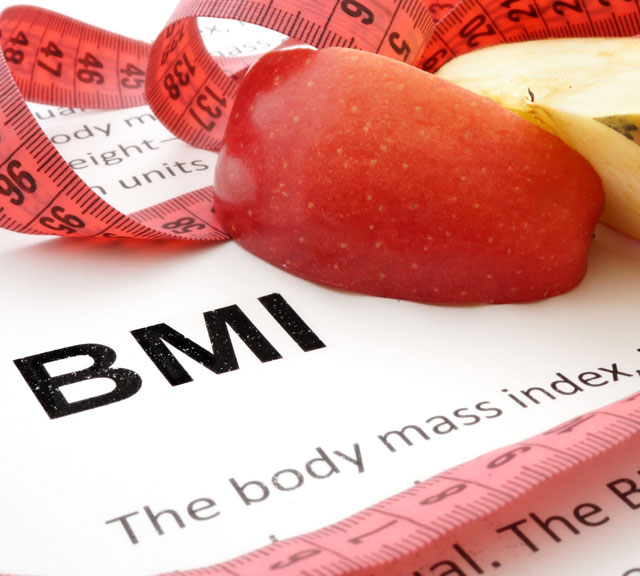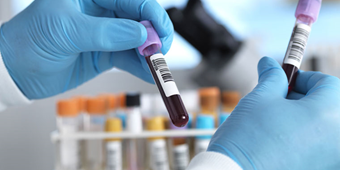- Cardiology And Vascular Health
- Diabetes
- Health Topics
- Heart And Vascular Disease Prevention
- Heart Disease Risk Factors
- Heart Health
- Vascular Health
5 Numbers to Know For a Healthy Heart

Find Your Perfect Match
Answer a few questions and we'll provide you with a list of primary care providers that best fit your needs.
“I’ve got heartache by the numbers…” So goes the chorus of an old country song, which concludes with this lament: “But the day that I stop counting, that's the day my world will end.”
These lyrics don’t just apply to heartbreak — they also apply to heart health. While it can’t protect you from a broken heart, getting tested regularly and tracking your numbers — from cholesterol to body mass index (BMI) to blood sugar — will keep your heart healthier and help keep your world from ending way too soon.
Here are five crucial measurements you need to know in order to keep your heart in prime shape:
1. Blood Pressure
There are two measurements in a blood pressure reading. The upper number is systolic pressure, which is the force of your blood against your artery walls when your heart beats. The lower number is diastolic pressure, which represents the force of your blood against the artery walls when your heart is at rest between beats.
Here’s how you know whether your blood pressure is in a healthy range:
- Under 120/80: This is the ideal range.
- Between 120-129/80 or less: You have elevated blood pressure. Take steps to control it before it gets worse.
- Higher than 130-139/80-89: You have high blood pressure stage 1. Work closely with your doctor, who will likely prescribe medications as well as lifestyle changes.
- Higher than 140/90 or higher: You have high blood pressure stage 2.
- More than 180/120: You could be in a “hypertensive crisis,” which is an emergency. If your blood pressure is in this range and you are NOT experiencing symptoms such as chest pain, shortness of breath, back pain, numbness/weakness, changes in vision, or difficulty speaking, wait about five minutes and take your blood pressure again. If the reading is still at or above that level, or you are experiencing this number along with the symptoms listed, call 9-1-1 and get help immediately.
FamilyDoctor.org recommends that you check your blood pressure at least once every two years after the age of 18; more often if you’ve had high blood pressure before. The higher your blood pressure, the more often you need to check it.
2. Cholesterol
The American Heart Association (AHA) recommends that all adults 20 or older have their cholesterol checked every four to six years.
To measure cholesterol, your doctor will order a “fasting” blood test, in which you don’t eat or drink anything for nine to 12 hours prior to testing. The report from your test will show your cholesterol levels in milligrams per deciliter of blood (mg/dL). The report will include the following numbers:
- High-density lipoprotein (HDL). This is considered to be “good” cholesterol, so higher levels are better.
- Low-density lipoprotein (LDL). This is the “bad” cholesterol, so the lower, the better.
- Triglyceride level. Triglyceride is the most common type of fat in the body and a high level is quite dangerous.
- Total cholesterol (HDL + LDL + 20 percent of triglyceride level)
According to the National Institutes of Health, a desirable cholesterol level for women is 200 mg/dL. A result of 200-239 is considered borderline high, and more than 240 is high.
But the AHA emphasizes that risk factors, like age, family history, smoking history, and blood pressure, must be considered when deciding what a “desirable” level is for you. Your doctor will take this into consideration when looking at your test results, and from that will recommend the prevention and treatment plan that’s best for you.
3. Resting Pulse
Your resting heart rate (resting pulse) is the number of times your heart beats per minute when your body is at rest. According to the AHA, what’s “normal” varies from person to person, and knowing yours can be an important gauge of your heart health.
Checking your pulse is usually pretty simple. The easiest place to find it is at the inside of your wrist, but you can also try the inside of your elbow, the side of your neck or the top of your foot. Then, put your finger over it and count the number of beats in 60 seconds.
If you’re sitting or lying down, and you’re calm, relaxed and not sick, your resting pulse is normally between 60 and 100 beats per minute. A resting pulse lower than 60 isn’t necessarily a concern. If you’re physically very active, or athletic, your pulse may be lower because your heart is in better shape and doesn’t need to work as hard to maintain a steady beat. Some medications, like beta blockers, can also slow down your pulse.
However, if your pulse is abnormally low (under 40), or you frequently have unexplained rapid heart rates, and either one of these conditions makes you feel weak, dizzy, or faint, tell your doctor right away. She can decide whether it qualifies as an emergency.
4. Body Mass Index
Body mass index (BMI) simply tells you whether you have too much body fat, based on a calculation that compares your weight to your height.
You can learn how to calculate BMI here. Or, use our handy online BMI calculator.
Once you have your number, what does it tell you? The higher your BMI, the greater your risk of developing heart disease and diabetes. Here are how the numbers shake out:
- Below 18.5: underweight
- 18.5 to 24.9: healthy weight
- 25 to 29.9: overweight
- 30 and over: obese
- 40 and over: severe obesity
- 50 and over: super obesity
5. Glucose (Blood Sugar)
While glucose levels are an indicator of diabetes, they also help predict heart health. That’s because people with diabetes have a higher-than-average risk of having a heart attack or stroke.
If your doctor orders a fasting blood glucose test (no food or drink for nine to 12 hours before testing), here’s what the results mean:
- 70 and 100 mg/dL: normal
- 100 to 125 mg/dL (5.6 to 6.9 mmol/L): pre-diabetes
- 126 mg/dL (7 mmol/L) and higher: diabetes
If you had a random blood glucose test (no fasting), the levels read a bit differently:
- Below 125 mg/dL: usually normal, depending on when you last ate
- 200 mg/dL (11 mmol/L) or higher: diabetes. If you fall into this category, your doctor will most likely order a fasting test.
The higher your blood pressure, the more often you need to check it.
Your doctor may also order a HbA1c (A1c or glycosylated hemoglobin) test. The A1c test measures your average blood glucose control for the past two to three months. No fasting is required for the test. Here’s what the A1c levels indicate:
- 5.6 or lower: this is ideal
- 5.7 to 6.4 percent: pre-diabetes
- 6.5 percent: diabetes x
If you are diagnosed with diabetes, your physician will work with you on a treatment plan that may include medication, as well as lifestyle changes. She will also ask you to take follow-up blood tests.
Heart disease is the leading killer of women in the U.S., according to the Centers for Disease Control. Getting tested regularly, and keeping track of your results, can help you beat that statistic for years to come.
Find Your Perfect Match
Answer a few questions and we'll provide you with a list of primary care providers that best fit your needs.
Source: American Heart Association; FamilyDoctor.org; Harvard School of Public Health; Centers for Disease Control; National Institutes of Health; Medline Plus




